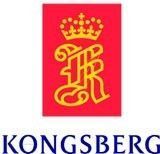-
StatusCompleted
-
Status date2009-08-21
The project objective is to develop an IF Switch Matrix for use in Multimedia Satellite The development is targeted Ka & Ku-Band Multimedia applications, where connectivity and capacity switching is taking place at an IF in the range from 700 MHz and up to 2,5 GHz. The demonstrator will verify the low cost approach for switch elements and a developed switch matrix unit will verify a specific connectivity for a targeted program.
The goal is to integrate the switch-matrices with our existing products, extending the integration and packaging philosophies that have been successfully applied on a number of programs.
The key issues in the development is to design and demonstrate an 8 x 16 IF Switch matrix based on multilayer PCB technology. Focus will be on low cost in combination with a highly integration and combination with the existing product range of downconverters, demux (including SAW subchannelization filters) and upconverters. It will be a key issue to extend the integration and packaging philosophies that have been successfully applied on a number of programs.The developed unit will be designed with a modular approach so that several switch matrices can be stacked in different configurations to provide the needed switching capability.
The development will strengthen the competitive position for ASN with respect to new multimedia market satellites. This program is a part of the strategy to establish a widened product portfolio into this new application. This and other ongoing developments (ESA programs), are targeted these functions as they will expand the level of integration around the today's products (BC's and Analog Processors).
The program will give an overall risk reduction with respect to technology issues and cost issues for commercial programs involving switching elements. Through the development ASN will gain improved knowledge of different semiconductor switching elements, thus improving the capability to meet challenging requirements in commercial projects. Furthermore the program will address dense routing of RF tracks and Control signals on multilayer microwave printed circuits board in combination with extended use the current modular build technology. This will improve ASN capability to provide cost efficient designs with optimised mass / functionality performance.
The major system application foreseen for this product is found in multibeam transparent systems in general, and particularly for multimedia applications where the beam-beam interconnect processor will be an important system element.
In Figure 1 is shown the block diagram of a basic payload for a multibeam satellite. In addition to the conventional transponder architecture, there is an additional block called the Interconnect Processor (ICP). The function of this is to provide connectivity between input and output beams, but most important, it also provides further sub-channelization of the transponder bandwidth from each uplink beam. In this way it is possible to flexibly adjust how large the bandwidth from each uplink beam is routed to a given downlink beam (gateway-to-user or user-to-gateway). These features are of particular interest for Ka-band multimedia applications with a large number beams, and with a changing traffic pattern. A vital part of the ICP is the IF Switch to be developed in this program.
There are three main milestones in the project; BDR (Baseline Design Review), MTR (Mid Term Review) and FR (Final Review). Program duration is 18 months.
System Studies & Trade Off Analysis
The first phase leading up to BDR consist of the following tasks at T0+4:
- System optimisation and Building Block Specification
- Technology Evaluation T
- est Definition
Equipment Design and Development / Test Development
The second phase ends at MTR (T0+9) and includes:
- Equipment overall design
- Switch matrix design
- Qualification of parts, materials and processes
- Procurement
- Test Development
EQM Assembly Integration and Test
The last phase ends at FR (T0+18) and includes:
- Switch matrix assembly and verification
- Equipment EQM Assembly and integration
- Qualification of parts, materials and processes
- Equipment Test and reports
The program is now close to the MTR. Baseline has been chosen and the detailed design is almost finalized. The most challenging issue have been the layout of the multilayer PCB. Through prototyping design rules and technology choices have been verified and implemented in the design. Qualification programs are currently running, and the preliminary results are promising. After MTR the manufacturing, integration and test will take place.




